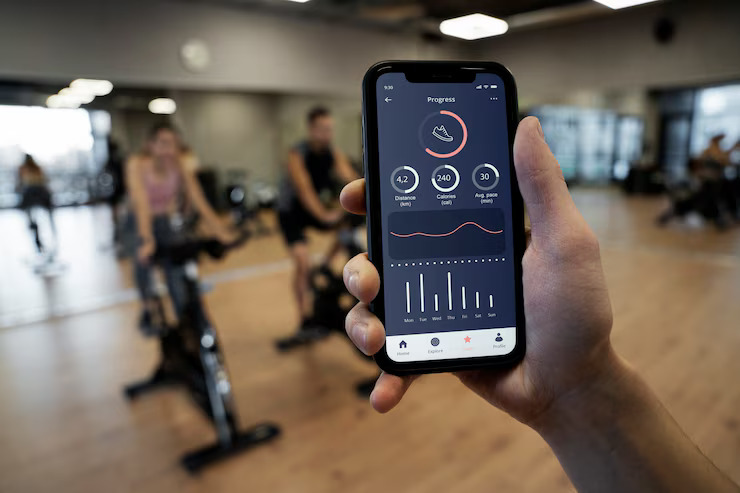
As a boutique fitness owner, you likely focus a majority of your time and energy on encouraging new clients to sign up for a membership at your studio or gym. Hopefully, you regularly check in on your conversion rates from intro to long-term package in your fitDEGREE software, and you've choreographed your ideal new client flow using steps like these. But if you're concentrating most of your effort on acquiring new clients, you're only solving half the equation for a profitable, thriving studio. Retention, i.e., keeping your clients year after year and resigning them into new contracts, is just as crucial, and possibly even more so.
Renewal Stats
According to the IHRSA, the average gym's retention rate is only 66 percent, which means that one-third of a business's clients aren't sticking around long-term. If the average boutique studio charges $90 a month, that snowballing 33 percent loss adds up quickly, and that's before we consider the marketing costs associated with recruiting a new member ($67 per new member for big gyms, more for boutique studios). The good news? fitDEGREE's preferred coaches often see clients with strong systems with retention rates above 95 percent. There are a few factors, but it primarily comes down to building relationships, regularly checking in, and asking- not wishing- for someone to stay. Let's break it down.
Building Relationships
If your focus is on obtaining clients, your conversion rate may be high, but your retention rate will suffer. Use your fitDEGREE report to give you your baseline and set a goal to increase it by five percent increments each quarter. Next, make sure you provide your clients with the experience they're looking for. Surveys and chatting with your clients are great ways to accomplish this because it's always better to ask than guess when it comes to member satisfaction. In an industry-wide poll, clients reported that they were looking for a welcoming, less-intimidating community for their Covid comeback. Virtual fitness is convenient, but many in-studio clients coming back in person are looking to build lasting relationships. In-studio events, member engagement opportunities, and client celebrations like those outlined here all contribute to your retention rate increasing year over year. Your retention strategy should be more than great classes. Why do your clients stick around? Ask them, and then make sure you prioritize their answers.
Check In to Keep Your Clients
For your longer membership terms of four, six, or twelve months, a mid-way check-in is a perfect way to ensure your client is experiencing the results and the atmosphere they were hoping for at sign up. Like your feedback systems, your halfway check-in should be a predictable, standardized experience that your clients can depend on. Sell this meeting as a member perk that can be customized to each member's goals, and then reach out when it's time to sit down.
Depending on your studio, this meeting may look a little different. It can be before or after class in person, over the phone, or virtual, but it should communicate to your member that you care about their experience and that they deserve your full, undivided attention. Eliminate distractions and focus on their goals, progress, and experience. You'll want to focus on the months leading up to your meeting and discuss what changes should be implemented for the rest of their contract.
fitDEGREE can support your Studio Fitness
Real-Life Example:
A multi-modality studio had an unlimited member who came in six months prior, hoping to tone and lose inches. At her halfway meeting, she expressed disappointment at not seeing her expected progress and wondered if running would be more effective. By pulling her schedule, the owner realized the client was avoiding the boot camp classes, and, when asked, the member explained that she was intimidated by the high intensity. They set up a few classes to take together so the owner could help her feel comfortable and introduce her to the other boot camp regulars. That member continued to renew (and loved boot camp) but would have canceled if they hadn't reworked her ideal schedule. Implementing a 20-minute check-in is one of the easiest and most effective ways to be sure you are meeting your clients' goals and expectations.
What to Automate
Studio owners are swamped and often want to automate their client retention flow. To a degree, you can use automation in your process, but semi-templated emails are a more persuasive communication tool that can save you time while still being personalized. An alert in your client tracking software or an auto email sent to both you and the client at strategic intervals is an effective way to use your technology, as long as it's not your entire retention plan. Here are some benchmarks:
- 60-days- "You're two months in! How do you feel? It takes 66 days to start to create a habit, so you're just a few days away from your new lifestyle." If this is a four-month membership, you can include their check-in appointment link with this email. A quick audit of their schedule would make for a personalized touchpoint for longer memberships: "You tend to attend four times a week, which means you're making the most of your membership, great work!"
- Halfway- rather than focusing on the fact that they're halfway through their term (which conveys an expiration), draw attention to how amazing they've been doing coming to class and working toward their goals. Include a link to sign up for their one-on-one if applicable.
- One month before renewal- "It's been a great ride, let's keep this party going!" with a renewal pitch is a perfect use of this automation. Semi-templated with an alert that there are 30 days to send a personalized email is an even better use of this benchmark. Count the number of classes they've taken overall, discuss their wins over the last X months, and talk about your studio's plans for the future. Most importantly, follow up in person.
Renewal Perks
Some studios implement renewal perks for clients who resign. These gifts can range from a pair of grip socks or a branded sweatshirt to friend passes and even a free month. While you may want to thank the client for their patronage, don't feel like you have to give enormous incentives to convince someone to stay. In most cases, a client won't be persuaded one way or another just because you're giving away a free month. That often means they were going to sign anyway, and you lost out on a month's worth of revenue. When deciding on your renewal gift- if you want one- look for ways to show your appreciation that are meaningful without decreasing your profit margins.
What if the Price Increased?
Maybe your client signed on with a special, or you've raised your prices in the last twelve months. Whatever the reason, your client's renewal is higher than when they signed initially- what to do? First, this isn't uncommon in any industry. Life-time price guarantees may be ubiquitous in the fitness industry, but most other fields don't hold the same expectation. Especially if you've set your pricing intentionally
present the member's renewal options with confidence. This may look like the following:
- "To help us offset our increasing expenses, you will see a small $5 monthly increase in your new membership pricing. You will see that return in our happy, well-compensated staff and new class formats coming your way; stay tuned!"
- "Our new client rate is $150/month. To thank you for your loyalty over the last 12 months, your membership will not increase to the new client rate. Instead, you will see a small $10/month increase to help meet our increased operating costs."
- If their rate isn't increasing and you want credit for it, your email may be: "Our new client rate is $150/month. To thank you for your loyalty over the last 12 months, your membership rate will not increase."
Remember to Ask
We're programmed to avoid rejection, but try not to leave it up to chance or guess whether someone will stay or not. This "cross your fingers" method of studio sales contributes to the consistently low conversion rates in the first place, so communicate your enthusiasm to the client. If you've been building a relationship with your client throughout their contract, you'll have their trust and can express that you hope they'll continue. The best practice is to assume the sale (also known as the assumptive close) and use "when" statements instead of "if."
Example:
- "When you sign the 100-class barre next month."
- "I can sign you up for the next challenge because you rocked this one."
- "You've been so consistent! I can't wait to see what your goals look like this year."
The assumptive close communicates your confidence in them and their retention without feeling pushy or aggressive.
When It's Still No
You did everything you could, and the client is still not renewing. First, try your best to remove yourself from your business identity. It can feel like our studios are an extension of ourselves, which is dangerous territory for an industry that sees membership churn as part of the job. You can have the best studio in town and still not be right for someone, so instead of getting defensive, get curious. Remember to ask why someone isn't planning to continue and listen closely to their answer. Exit surveys are often left unanswered, so ask them face-to-face and track the reasons so you can continue to improve. If you regularly hear that you don't have something (lunchtime classes, child-care, virtual options, etc.), you can either:
A) make a strategic decision to offer it
B) adjust your marketing to better appeal to your target client
C) track the responses for an annual evaluation
Client retention is often left to chance, but not any longer. Set aside an hour to map out your proactive member engagement strategy to keep your clients returning each year and watch your retention rate skyrocket.
Need support? Contact one of fitDEGREE's preferred partners to customize your client process.













.jpg)












.jpg)










.jpg)










































.jpg)




























